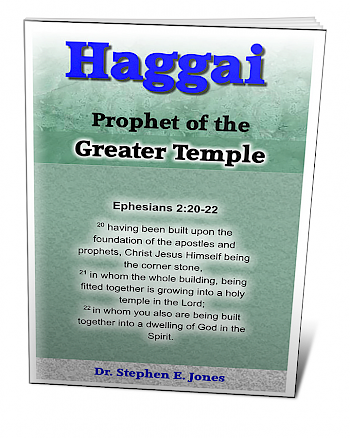Latest Posts
View the latest posts in an easy-to-read list format, with filtering options.

Haggai prophesied in the years after the end of Judah's captivity to Babylon. The first major project was to rebuild the temple in Jerusalem. This project actually prophesied of a greater temple that was yet to be built made of living stones.
Category - Bible Commentaries

Haggai 2:6-8 says,
6 For thus says the Lord of hosts, “Once more in a little while, I am going to shake the heavens and the earth, the sea also and the dry land. 7 And I will shake all the nations; and they will come with the wealth of all the nations; and I will fill this house with glory,” says the Lord of hosts. 8 “The silver is Mine, and the gold is Mine,” declares the Lord of hosts…
As we showed earlier, Haggai prophesied during the time of the Persian empire, which God raised up to shake Babylon and to fund the work of building the temple. But there are multiple applications. The passage is interpreted in Heb. 12:26, 27, saying,
26 And His voice shook the earth then, but now He has promised, saying, “Yet once more I will shake not only the earth, but also the heaven.” 27 And this expression, “Yet once more,” denotes the removing of those things which can be shaken, as of created things, in order that those things which cannot be shaken may remain.
The author of Hebrews (Paul, I believe) tells us that Haggai’s prophecy, rather than referring to the shaking of Babylon, actually refers to the first Pentecost, when God came down upon Mount Horeb to give the law to His people. At that time, “the whole mountain quaked violently” (Exodus 19:18), and “all the people who were in the camp trembled” (Exodus 19:16).
This was the day that God formally organized the nation as the first Kingdom of God. Great as it was, it was only a small type and shadow of something much greater yet to come. Hebrews 12 points out that Haggai prophesied of a greater shaking that was to take place in the future when the new Kingdom was to be established.
He tells us that the purpose of the shaking was to throw down and remove “those things which can be shaken… in order that those things which cannot be shaken may remain.” This greater event is no longer a Pentecostal event, but is instead the fulfillment of the feast of Tabernacles. No longer is it to be one small nation that forms the Kingdom, but all nations. Both the heavens and the earth will be renewed as the old order passes away (Rev. 21:4, 5).
In long-term prophecy, this shaking will not cease until the heavens and the earth have come fully into agreement with God and His laws. Yet also, a great “earthquake” will overthrow Babylon (Rev. 16:18) to begin this time of shaking. The first things to be shaken will be the political and economic structures of Babylon, followed by personal shakings as men repent and turn from their carnal ways.
This prophetic earthquake correlates with the stone that strikes the image on its feet and grinds it to powder or chaff for the wind to disperse (Dan. 2:35). After the initial “quake,” it will take a thousand years of more gradual quaking to bring the entire earth under the dominion of Jesus Christ.
At the end of the Sabbath Millennium, God will release Satan in order to induce the rebellious nations that yet remain in outer darkness to attack the Kingdom of God (Rev. 20:7-9). This is to give God lawful cause to conquer and annex these last remaining portions of the earth and to enforce His law upon the captives.
Once the earth has been fully subdued, then the general resurrection will summon all of the dead from ages past, and the final Age of Judgment will begin. That judgment will serve to shake the rest of humanity in the “lake of fire” until they too are fully in agreement with God and His law.